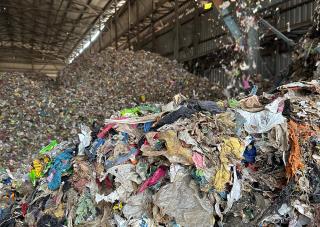While cement producers such as Lafarge have made the commitment to significantly reduce their CO2 emissions, if higher reductions are to be obtained, the industry must find new, non-traditional ways of cutting back levels. The Lafarge Research Center has investigated the conversion of flue gas CO2 into micro-algae biomass.
World sustainability within its entire scope (local, global, public, private, etc) has become a major subject of interest for all mankind in industrialised and developing countries. On the key issue of global warming, many private international companies have made serious commitments to reduce their carbon footprint, directly or indirectly related to the Kyoto protocol.
The cement industry emits approximately 665kg of CO2/t of cement produced around the world1. In this context, Lafarge took an active role by making a pioneering commitment in 2000 as part of its partnership with the WWF to reduce its net emissions by 20 per cent between 1990 and 2010 (per tonne of cement produced worldwide). The company reached this objective mainly by applying conventional approaches such as modernising installations to improve energy efficiency, using alternative fuels and increasing additions in its cement.
Nevertheless, if higher CO2 reductions are to be reached – for example, by dividing emissions by a factor of four by 2050 – new, non-conventional approaches must be developed. The Lafarge Research Center, located near Lyon, has invested important means in fundamental research on CO2-related subjects, one being the growth of micro-algae to capture CO2. The idea is based on the fact that the CO2 contained in exhaust gases could be transformed into micro-algae biomass thanks to photosynthesis and the subsequent biomass would be transformed into a renewable product.
A study of micro-algae was carried out in the laboratory, using pure CO2 in a completely-controlled environment (temperature, light, sterile culture medium, pH, etc). Based on the positive results of this exploratory study, Lafarge began to study this subject in an industrial environment at a real cement plant in 2009. The company chose a methodological approach with well-defined successive milestones before using the lab results on industrial up-scale trials.
